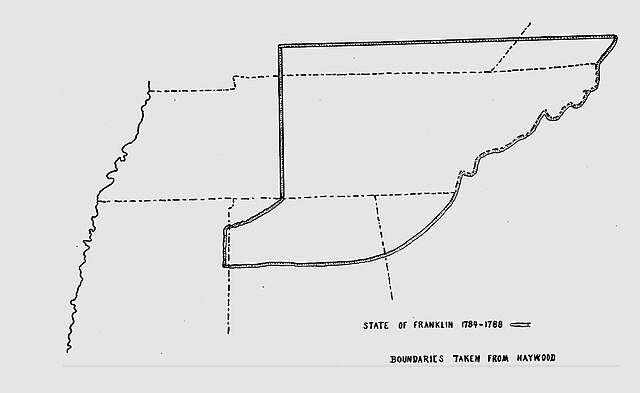
It’s one of many tales of the founding of America. Settlers from England were exploring more and more of the New World, and as they did, they set up new communities far from the comfort of home. We know these stories as well as the backs of our hands, if not in detail then at least in theme.
Most of the original states have a story that echoes these themes, but there’s one tale in particular that I want to tell you. Some think it begins as far back as the late 1670s, when English settlers began to cross over the Appalachian Mountains. First there were dozens, then hundreds, and then thousands. They made their homes in an area that was part of the far western edge of the colonies of North Carolina and Virginia, settling along the Watauga River valley.
They farmed and hunted for years, making a new life for themselves, but in 1763 England declared it illegal to cross the mountains into the west, so they had a choice:
They could either return to North Carolina’s legal territory, or become united and support themselves. They had fought to be there, after all, defending themselves against the Cherokee tribe of Native Americans. They didn’t want to give all of that up.
In 1772, they drafted a document that foreshadowed the coming Declaration of Independence. With it they formed the Watauga Association, set up courts and a militia, and continued to defend their territory. A few years later, the British sent troops over the mountains to attack them, but these frontiersmen were stronger than they seemed. They met the British at the foot of King’s Mountain and sent them retreating back into the eastern colonies.
After the war was over, they tried their hand at being a satellite colony of North Carolina, but after being taxed almost as severely as they had under the Crown, they seceded to go it alone. In 1784 they set up their own state—America’s fourteenth, in fact—and elected a governor named John Sevier. Thomas Jefferson even backed their move and helped them make a formal request to the government to be recognized as a new American state.
Sadly, the new state failed to get the approval necessary, and their entire enterprise fell apart. About four years after attempting to become an independent state, the land was repossessed by North Carolina and Sevier was arrested as a traitor. Which is why you’ve never heard of the first fourteenth state in American history, a state named after one of the heroes of the Revolution, Benjamin Franklin.
Yes, the state of Franklin was shut down before it could even begin its new, official life, but the spirit that gave birth to it—the strength of the frontier settlers and their fierce independence—helped keep the dream alive. In 1796—twelve years after their first failure—the people of the territory were successfully admitted to the Union as a state. They changed the name from Franklin to Tennessee, and it’s stuck ever since.
Oh, and their first governor? None other than John Sevier. Naturally.
It’s a powerful lesson, wrapped up in a bit of lost, bizarre history. Our failures often hurt, but over time most people will forget about them. What’s truly important, it seems, is to never give up.
You never know how things will turn out in the end.

